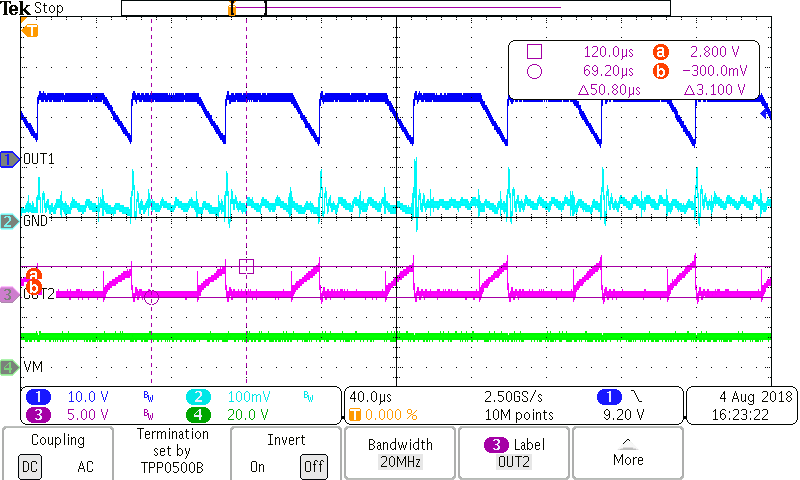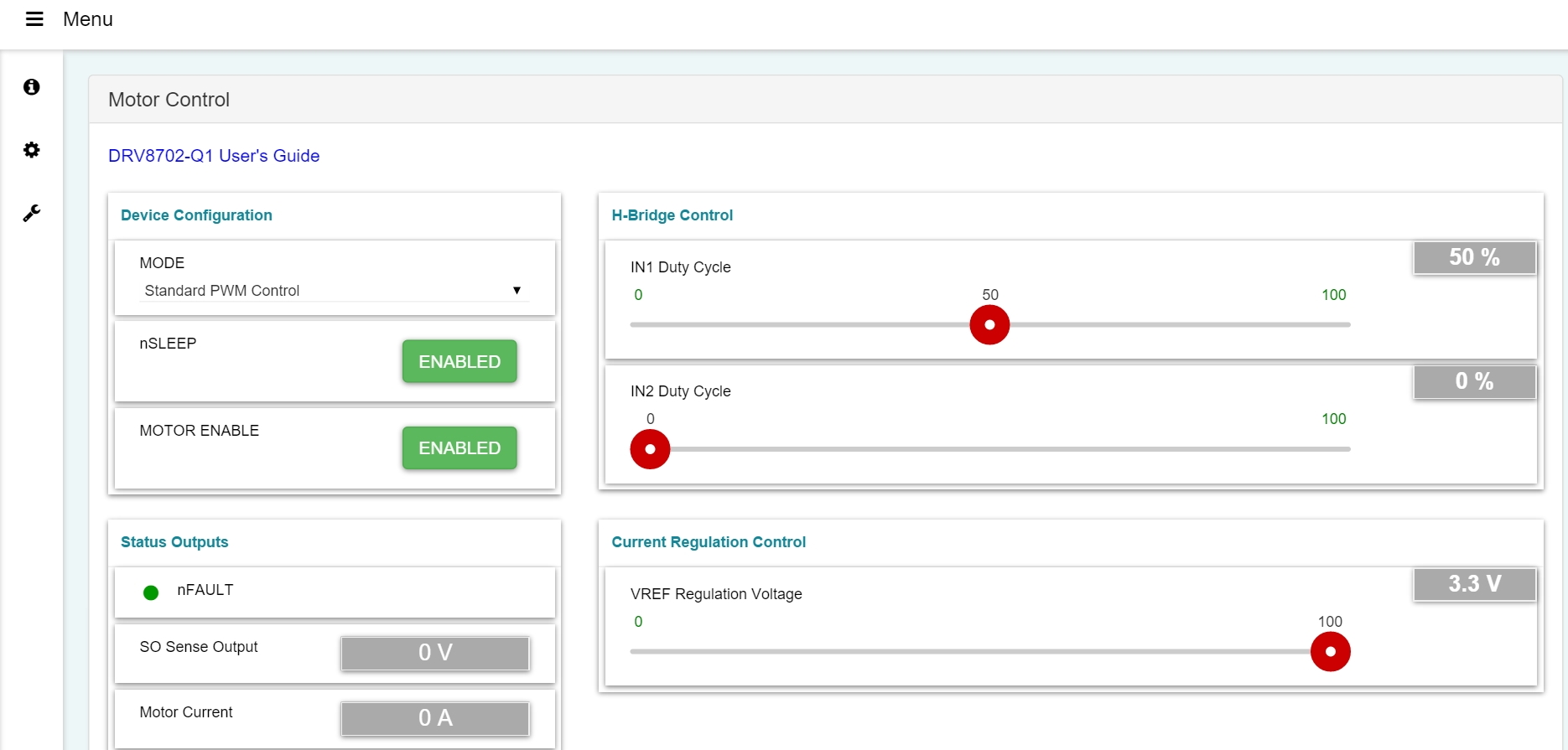Other Parts Discussed in Thread: DRV8702-Q1,
Hi team,
Recently I study the DRV8702-Q1 and make an experiment that use the DRV8702-Q1EVM to drive a brush motor, then I have some questions as follows,
1. ch1: pin-IN1/PH, ch2: pin-SO, ch3: pin-GH1, ch4: motor current
a. Why does the input(ch1) have jitter on the rising edge? In addition, experiments have found that the smaller the duty cycle of the input, the more severe the input jitter, why?
b. test condition: VREF=3.3V, Rsense=10mΩ, Av=19.8, then I calculated motor's chopping current I=VREF/(Rsense * Av)=16.67A
but in the waveform(current is green line), initial current reachs 28.4A ,Why is it so large, should it not be less than 16.7A?
2. ch1: pin-SH1(out1), ch2: GND, ch3: pin-SH2, ch4: VM(power supply)
At this time, input's duty cycle is 70%, Why is the waveform of SH2 (purple line) gradually rising when the input PWM is 0?




